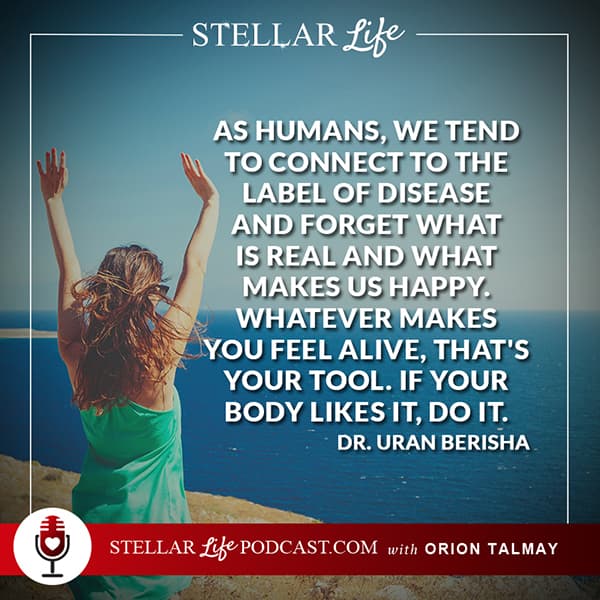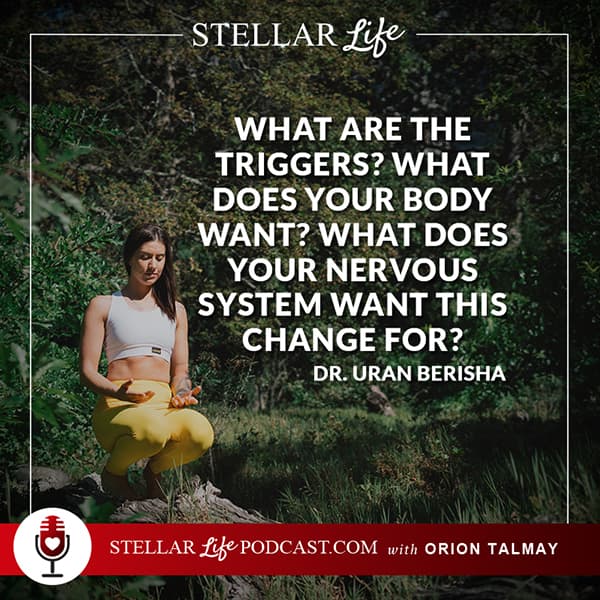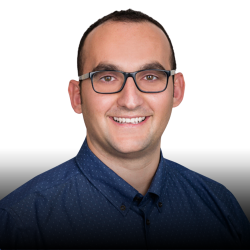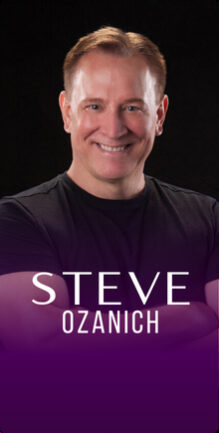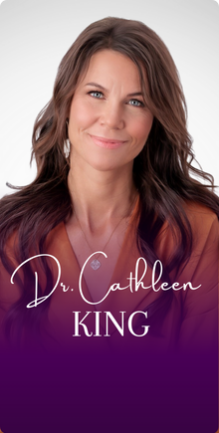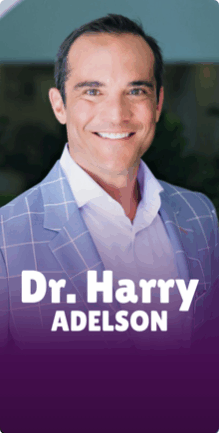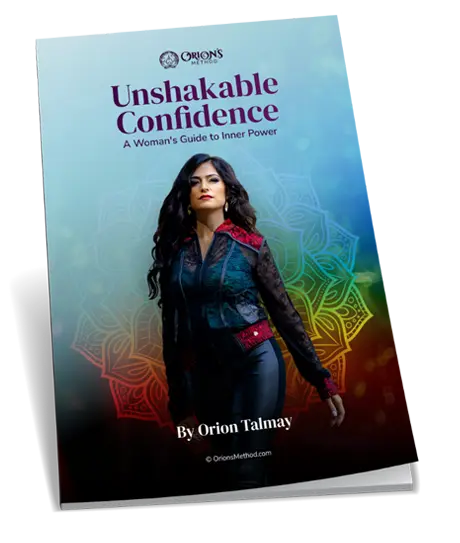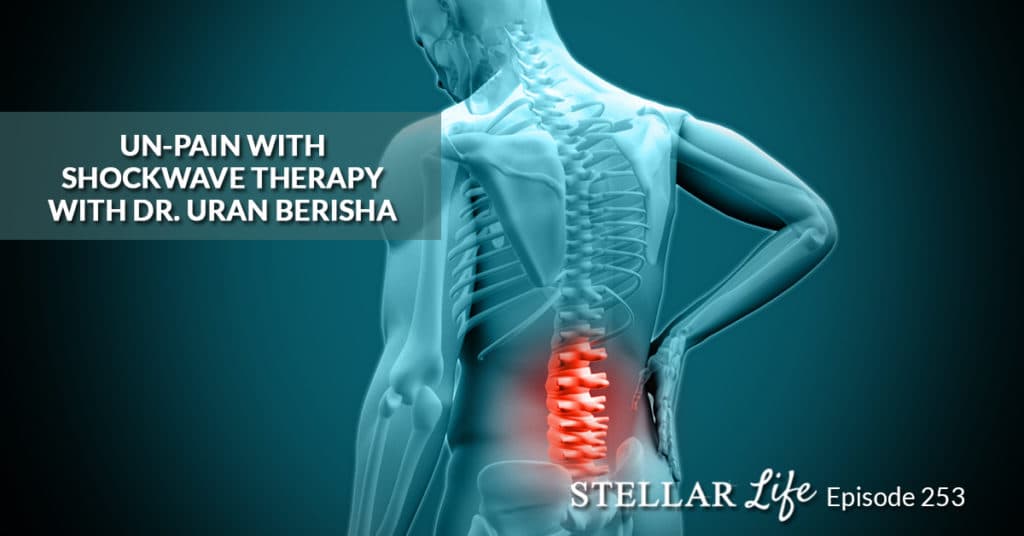
In this Episode
- [02:27] Orion introduces Dr. Uran Berisha, the Founder and Visionary of Unpain Clinic. He helps people relieve chronic muskulo-skeletal pain and mentions practitioners on shockwave therapy around the world.
- [07:12] Dr. Uran shares that they use Shockwave Therapy to treat any scar in the body after surgeries, regardless of age.
- [12:18] How sending powerful stimuli on the scar, like a shockwave or thunder of energy, can wake up the nervous system and repair the nerve-ending damage in that area.
- [19:59] Dr. Uran shares the right procedure of dealing with scars using his technology, Shockwave Therapy.
- [25:36] Dr. Uran recommends Scar Activa for scars, which uses electrohydraulic shock waves to stimulate them.
- [30:59] Scar treatments using Shockwave Therapy should not be painful. It should only be enough to stimulate, not overtreat.
- [36:13] The three types of shock waves generated at the electrohydraulic, electromagnetic, and piezoelectric system. Electrohydraulic and electromagnetic systems are recommended because they have a wider focal point.
- [41:19] NEUROLITH, offered by STORZ in Europe and soon in Canada, is a form of shockwave therapy performed on the head which can improve memory and brain function.
- [47:23] Dr. Uran shares a story about how his patient, who beat cancer six years ago and was being treated for her knees, started dreaming again for the first time in six years.
- [50:55] Visit Dr. Uran Berisha’s website at UnPainClinic.com and schedule a free telehealth session with him directly. You can also visit his two clinics in Edmonton.
About Today’s Show
Hey, Uran. Welcome to Stellar Life podcast. Thank you so much for being here.
My pleasure. I’m actually very grateful and I’m very happy to share today a little secret. Hopefully, soon, it’s not going to be a secret anymore. I’m very excited to talk to you today. Thank you for inviting me to your podcast.
Thank you. Before we begin, can you share a little bit about yourself and your passion?
It’s interesting.
That was a big sigh.
Yes, because I don’t know where to start. I’m only going to be 35 on June 27th, but I feel I’ve been living in this world forever. I’ve been through a lot. I’m actually originally from Kosovo. I moved to Canada about 11 years ago to Alberta, Edmonton. In Kosovo, I was a physiotherapist. I moved to Canada. I had to start everything from scratch. I didn’t speak any English, no job, nothing.
There is no expiration date on injuries in the body unless you fix and treat them. Share on XI found a way to practice my passion or love what I do. I realized that nobody is doing Shockwave Therapy in Edmonton. In Canada, there were only a few clinics. I said, “Hey, these people are missing a lot.” I bought the first device. I started offering to my clients and begging them, hey, please come and get a shockwave for your chronic pain. That’s how we started pretty much from word of mouth, helping people.
Today, I’ve done over 30,000 treatments through shockwaves ranging from all kinds of people’s needs, all kinds of chronic pain. But one thing that’s been mind-blowing personally was changing everything that I learned even from school. Almost like decoding chronic pain has been the scar treatments, specifically, scars that have been caused by surgeries.
Could you tell me a little bit about how you treat those scars?
Yes. Actually, I’m going to start with a personal story about scars and then I’m going to explain why and how we treat them.
When I was five years old, I had hernia surgery. Doctors at that time said I was very hyperactive and that’s how hernia happened. Anyway, I became a competitive swimmer, a cyclist. I was very built with muscles, but I always had a big belly. I could never understand in my life, why do I have this big belly? Why do I have strong legs and arms but a big belly?
Scars affect muscle function.
About six years ago, I took training in neurokinetic therapy which is muscle testing. It tests our nervous system to see how muscles are actually working, how they’re communicating, and how they’re responding to the nervous system. That’s where I learned how scars actually affect muscle function. I treated my scar using shockwaves and a couple of weeks later, people started actually saying to me, “Oh, are you on a diet? Are you losing weight?” I said, no, I just treated my scar and I learned how scars shut down communication.
While I was actually in that training, they said their way of treating a scar—that’s why when you get surgery, the surgeon tells you to go and touch the scar to massage it to send stimulation to the nervous system, so hopefully, they start communicating. Because of my experience with shockwaves, I said, “I can do this in a matter of seconds using sound waves,” sending signals again from the scar where the skin has been cut, and then the nervous system starts communicating right away.
We do use shockwaves to treat any scar in the body after surgeries. It doesn’t matter how long it’s been. I always say it to clients because they come to me complaining about chronic lower back pain. Let’s say they had a C-section or appendectomy 40 years ago. They say, how is that possible? How is it still affecting me? I tell them that as long as you still live in the same body, it’s still affecting you. The other thing is there’s no expiry date on injuries in the body unless you fix and treat them.
What really happens there that creates pain in the body?
Imagine this. The human body has two structures or the way we operate. We start as software from a cell. A cell is a little harbor that contains all those molecules that create us humans. I look at the body in two ways. We have the software aspect of the body which is the nervous system, and then we have the hardware aspect of the body which is the physical structure.
Imagine skin almost like your outer brain. Skin is the biggest organ in the body and it contains nerve endings. It gets all the information about the external environment and it feeds your nervous system with that information. You feel heat and cold through the skin, you feel the touch. We have different other sensors that actually feed our nervous system with information, which is the visual aspect, auditory, and then the proprioception helps the balance.

When the skin is cut during the surgery, there’s nerve-ending damage that happens in that area, so your nervous system is actually going to lose communication with that site. If there’s no information coming in from that site of the skin, then there is no motor response. Your muscles don’t know how to respond properly. What’s going to happen is if the surgery is actually big, it’s going deep, and it’s covering a lot of structures, then there is more damage. Your nervous system will actually be forced to find an alternative pathway to communicate or to use the body.
That’s where it goes and creates what we call dysfunctional patterns. Scars, from the software perspective, they mess up the proper communication. That’s the first thing. Everything in the body conducts or communicates almost through electric signals. If that communication is interrupted, then again, the function is affected.
The other way that scars affect the body from the hardware perspective is that if you heard the term—now it’s becoming much more popular—”fascia.” It’s the thin, white layer. If you cut meat, you see one very thin layer that covers everything in the body. Fascia is an intact web in the whole body. It’s all connected. To use a simple term, that’s where all the fiber optics of the body are. That’s where the nervous system populates the structure more than anything else with nerve endings.
When the fascia is cut, it’s actually going to start pulling in the direction of the cut. In any surgery in the body, let’s say C-section, appendectomy, or if you had ankle surgery, the effect of that scar is global. It can give you neck pain. It can give you shoulder pain because the pain in the body is just a signal that the nervous system is actually requesting a change. It doesn’t tell you where it’s coming from. If anybody has been in any chronic pain and had any surgery in their life from the time they’re born to today, they must treat the scar because that’s usually the missing link.
It’s like if you wear a sweater and you pull on one side of the sweater, the other side gets wrinkled.
Exactly. You nailed it.
You need very powerful stimuli for you to change from the periphery to the scar.
Is there another way to treat the fascia? What’s the difference between massaging the scar or massaging the body to doing laser to doing Shockwave Therapy?
Let’s start with manual therapy. With massage, we always have a limit. For the scar to update the communication, the software, you need a very high, powerful stimulus, which with hands, we can’t.
Unless you’re a high vibrational being. Just kidding.
Exactly. That’s why you need very powerful stimuli for you to change from the periphery to the scar. To change things in the nervous system, you must send almost like a shockwave, a thunder of energy, signal, or something so you wake up the nervous system and say, hey, this is where I am. You forgot about me. Come back and talk to me.
With hands, I say we have limits because imagine this. Any time we do manual therapy, we are treating muscles with muscles. Let’s say I’m the therapist. I’m treating the scar. I’m using my hands and muscles to treat the muscles, so we have a limitation. We can only get so much, therefore, it will help to almost detach the skin from the fascia which helps a lot. It releases superficial restrictions, but is not able to restore the communication and is not able to get to C-section. Manually, you can only get about one or two centimeters deep, but beyond that, you cannot really.
With lasers, it’s really good for superficial effects. Again, to treat the skin, it would help to reduce the keloid because lasers are lights. They use light to heat up the cells or to close biological stimulation. For the laser to really go deep, then they need to increase the energy. Therefore, again, you can overheat the cells. These are called lasers, but we need a mechanical force. We don’t need just biological stimulation.
Therefore, shockwaves actually use sound waves. They’re the same technology as they break up kidney stones with. They’re characterized by a very high amplitude of mechanical power. If you had a treatment by a physiotherapist with ultrasound, the shockwave is about 3000 times stronger than ultrasound when it comes to mechanical power. But that sound wave only lasts 0.2 nanoseconds in the body. It’s extremely short, so it almost just taps on the cells. It doesn’t kill any cells. There’s no heat released or cold.
Whatever makes you feel alive, that's your tool. If your body likes it, do it. Share on XDoes ultrasound kill cells?
If you hold it in one place for too long, yes, you can overheat the cells.
I was thinking about when I was pregnant. My baby was breech and I had to do—I forgot the name of it, but when they tried to turn the baby around and they used two hours of ultrasound on me, I’m like, wow, I don’t know how healthy it is for the baby.
That’s a diagnostic ultrasound. Normally, it should be a little bit less powerful than the therapeutic ultrasound. But still, the baby feels everything. Even ultrasound, it’s a sound wave.
When they did that, he went up and I felt his head just bumping under my ribs. He was just so scared of it. It was terrible. I tried to flip him so many times. I did all kinds of exercises, but he decided he just liked to be upside down.
We planned a home birth. I had a bathtub and I invited the only doctor in L.A. that does breech deliveries. After 12 hours of being fully open, fully dilated, I had to go for a C-section. I went from this beautiful environment at home where I had a team, my husband, beautiful music, candles, water—everything that I needed—and food, to being rushed to the hospital. The doctor there was very severe.
Thank God, she delivered my baby. C-sections can save lives and probably save the life of my baby. But it was a completely different experience. I feel like this scar that I have is more than just on the physical level. This scar also holds trauma. Can Shockwave Therapy release the trauma as well?
Every surgery holds emotional trauma.
Yes. What you just shared with me here happens with every single person. It doesn’t matter the surgery. Every surgery actually holds emotional trauma. The way I personally can tell is if the scar has a lot of keloid buildups, and if it’s still pink even after 20 years, I can tell that that person didn’t like that surgery. The nervous system feels everything.
Even though you’re under anesthesia, your body knows everything that’s happening, and all that’s not meant to be really cut. That’s why I say, yes, we have surgeries available, but they only should be for life-threatening or C-sections to save the mom and the baby. It’s unbelievable what I have experienced because I treat an average of about 10 scars a day. The relief that people get is mind-blowing.
I warn everybody. I say, “Hey, after the treatment, if you feel you want to cry, don’t stop yourself. Keep crying. If your mood changes, you have no clue why you’re getting more sensitive, you’re more sad, or you’re very hyper, it’s very normal for 72 hours.” That’s when we actually release the emotional trauma that is stuck.
This is another thing. Anybody that has had any surgery in their life, if they’re still afraid of touching their scar or when they want to touch the scar they feel weird, they have emotional trauma stuck in that scar.
If you have no shockwave available wherever you live or no other modalities, please keep touching that scar. Please keep reconnecting with the scar because it’s messing up your energy flow. It’s communication. It becomes this itch in the nervous system. It never lets you fully relax or have that full energy flow throughout the system.
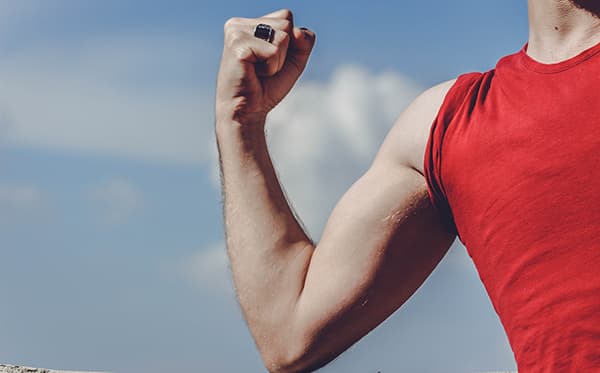
Thank you for sharing that. I feel weird when I touch my scar still. I’m touching it right now. I’m like, it’s still weird.
You had the treatment with shockwaves?
Yes. We know each other through my husband. You were so sweet. When I first heard about it from you, I was in Israel and I couldn’t find the right facility. Even though it exists I just couldn’t find it. But now in Florida, we found a place.
They don’t do your rhythms. The technician there is working with different rhythms. You were on the phone with us, and he gave us the exact amount of whatever needs to be done. What’s the difference? Why doesn’t everyone know what you know? I know you teach technicians.
Yes. Actually, I’m the first guy that put this together. How scars affect the nervous system has been known in the past, but again, how to fix it this quickly—because of my experience with shockwaves in other fields, with multiple devices, being an instructor, technician, and everything, I know shockwaves in and out—you need to come up with a specific number of shocks and energy.
You don’t want to under-stimulate the cell or you don’t want to over-stimulate the cell. Because if you under-stimulate, if you go too low, then the nervous system is not going to pick up. It’s almost like you’re touching the scars. You’re just tapping into it. You want it to be enough that sends the signals and forces the change, but at the same time without stimulating a new change. Because if you do too much pressure, then the stimuli are so high that the nervous system is going to try to create a new connection with that area. All we want to tell your nervous system, your brain is hey, here we are. Just reconnect with this area.
Every time you have pain, pay attention to your surroundings and see: what is missing? What the trigger is? What do your body and nervous system want this change for? Share on XThat communication, based on my experience, happens even in the first session. What I call the software update after the first shockwave treatment is when the communication starts happening, but then I recommend especially with C-section because it’s a deep cut, to work more on the hardware aspect, on the scar tissue adhesions to get the other layers untightened.
Right. What happened with my C-section and what happens with a lot of people that have this type of scar or any abdominal surgery that is deep is that my core could not engage. There is a miscommunication between the nerves in the scar area to the brain, so the rest of the muscles are overcompensating.
The way it feels is that I wake up every morning and my glutes, my lower back, and even a little bit of my upper back, my hips, everything just feels like it’s in pain actually. If I don’t stretch, I am in pain. If I don’t wake up in the morning and stretch, I’m in severe pain.
What happened to me after the first treatment is that first, I noticed since the pregnancy—it’s been a year and seven now since the delivery—I would nurse my baby and try to get off the bed. I have to hold things because my core was not engaging. That evening, I was like, oh, I don’t feel anything different. But after I nursed him, I got up and I was like, hey, wait a second. I didn’t have to put my hand on the dresser, that’s pretty cool. That was really, really nice.
I love it. I need to explain this. This happens with my clients. I treat them and then they feel nothing because when everything functions normally, you don’t get any pain. You don’t get any change, that’s your norm. Your nervous system doesn’t bother you to tell you that you have a problem or you have an improvement. It just feels good. I test and they say, “Whoa, you just pushed my legs down before the treatment and now I can hold you. I don’t even have to try.”
Every time the core is dysfunctional, the extremities will suffer.
Every time the core is dysfunctional, your extremities will suffer. The pattern that I see with C-sections, appendectomy, tummy tuck, and breast augmentation surgeries is the core becomes dysfunctional. You start overusing your hip flexors. Your hip flexors start flexing your core muscles in the neck, so you do the motion but it’s not coming from the core. Then, you start overusing your extremities. That’s why every time you were going from sitting to standing, your body had to use your arms to push up because the core wasn’t doing the work.
Let me tell you about the second time I went there. I went there and I got a little too excited with Shockwave Therapy so I didn’t only treat my scar. I was like, “Please do my shoulders and my whole back because my back is hurting, and it’s probably just as good as a massage.”
My God, my back is feeling really tight. It’s back to tightness. After the first treatment, I got up and I was feeling much looser, but now, after the second time where I got so excited and asked them to treat my whole back—I went back even this morning—I woke up my back hurts. I need an hour of stretching before I even get out of bed.
What happens there? I overdid it, right?
No. Imagine this. Until you had the first session, who were your muscles that were taking care of you against gravity?
My glutes, my quadratus lumborum, my shoulder muscles, everything else but my abdominals.
These are the overworking muscles. These are the muscles that are already tired because they have been supporting you for over a year and a half to do everything that you have been doing. That’s why it’s very important to understand what the nervous system wants and not to go with what we think.
I was just like, this is amazing. Instead of getting a deep-tissue massage, I’ll just do this five-minute treatment and boom. But I think I overdid it for sure.
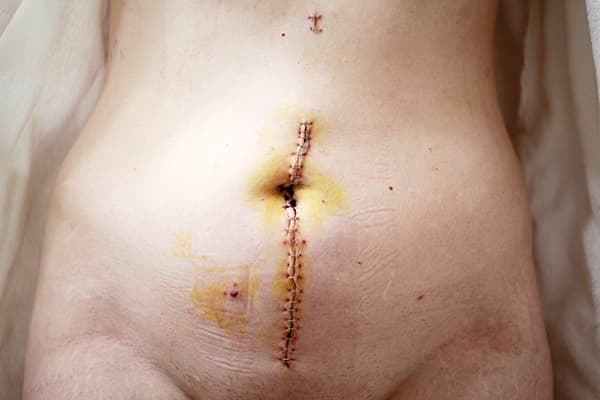
No. What has happened, because you had an electrohydraulic shockwave. Electrohydraulic shockwave is a shockwave that does more stimulation in the body. It stimulates more muscle growth, so it’s not relaxation. That’s why for scars, I recommend more electrohydraulic because I actually even named this procedure. I call this Scar Activa because scars are dysfunctional so you need to stimulate them. You need to wake them up.
When you do stimulation on overworking muscles, now, you’re overstimulating them. That’s why your nervous system defaulted back to before. For your nervous system, your back muscles were already stronger than the core because the core didn’t have a chance to get going and get the strength. That’s why everything went back.
If you want to get a shockwave for your back, to relax, and to feel good, you have to do it on the front of the scar—the electrohydraulic system—so it activates. On the back, you go and use what actually the word in North America, it’s known as the “shockwave.” It sounds like a jackhammer. That’s not a shockwave, so never use that on the scar by the way. But you go and do that on the back muscles which relaxes them. That’s how you reach the balance. Probably, it’s a good idea to go and get a massage or stretch and then just keep working on the front. Don’t touch the back.
Don’t touch the rest. Don’t get so excited. I have a shoulder injury on the left side. When I first came there and when I did the C-section scar, I was like, oh, just do my shoulder. I did my shoulder, I guess it has scar tissue inside, it felt really good so I was like, why not do the whole body? Let’s go. I didn’t do the whole body.
Shockwave is a regeneration therapy.
It’s still going to help you a lot. It’s just that you have to give it time because a shockwave is a regeneration therapy. Even though we’re using it for different purposes here to activate the scars, in about six weeks to about nine weeks time, you will have about 2%–300% more blood circulation in that area. Then, the high-tensile activity will be around 8–9 weeks.
Even though right now, things are a little bit worse because they are overstimulated, things must settle down. Within 4–6 weeks, they must settle down. But what’s going to happen? The same thing happens with the treatment. You’re going to adapt to that change every single day when you get up—for you, it’s the nerve—but probably six weeks later, you’re going to just stop and think, oh, it didn’t hurt when I did this. Oh, my back is not as bad. That’s what we typically see.
That’s good. I used to do martial arts a very long time ago. Now, I’m at the place where I’m like, maybe I should start again. I want to kick a bunch. I need it. I’m stressed out. I need to kick and punch. That and yoga, I want to do both.
It’s interesting. I used to do Muay Thai, kickboxing. My clients would ask me, “Why do you do that?” I say, I actually find that I can meditate and relax more when I’m doing that because I’m not thinking. If I do yoga—just an example—I have time to think. I cannot really shut down my brain. If I’m kickboxing and sparring, if I think of anything else, I get a punch, so I have to be 100% there.
There is such dogma and illusion about what spirituality is and what spiritual is. You see a person on Instagram with a beautiful background practicing yoga and he or she is spiritual. Then, you see a person doing kickboxing and they’re so earthy.
In the human body, if you have pain or if you have dysfunction, most of the care is more towards the symptoms than the cause. Share on XBut it’s so not true because you can find divinity and you can find spirituality in any practice. It’s just our dogma, our close-mindedness, and the shutters we put inside our brain that cannot see that. We can’t see the expansion of what everything is because you can have meditation while cooking. You can have a meditation while kickboxing. You can have a meditative state while taking the garbage out. Who knows? Everything could become a connection to the Divine.
It’s interesting because this is even on chronic pain, from a therapist’s perspective. That’s why I don’t like using names when somebody comes to me and says, ”Oh, I have rotator cuff tendonitis, degenerative disease,” or this and that. These are just fancy names.
As humans, we tend to connect to the name and actually really forget what is real, what is you, and what makes you happy. Wherever you find that peace, whatever makes you go in that meditative state, or for you to feel alive, that’s your tool. Do it. If your body likes it, do it. I fully agree with you. That’s amazing.
I’m going back to one of my experiences with Shockwave Therapy. When I was with the technician, she kept asking me, does this hurt? Are you in pain? I’m like, no, I don’t feel anything. I’m not in pain. She kept asking me over and over again if I’m in pain. It wasn’t painful at all. Does it have to be painful?
For scar treatments, no. With that intensity that I provided you guys and pretty much anybody who’s listening, wherever they are in the world, they can connect through you and us and we’ll provide that. That’s for all the listeners. That intensity is enough to only stimulate but not to overtreat.
If your body likes it, do it.
It’s different intensity when you go and treat the tissue, the hardware, and it’s completely different when you actually try to send signals. The only time that it would hurt, let’s say if somebody has a tummy tuck surgery, usually, with those surgeries, they go on the side. They go all the way to the hip bone, even though the shockwave is actually at a low level or low energy. When it hits the hip bone, it’s still going to hurt. But as long as the shockwave is on the soft tissue, then there’s no pain or very minimal pain.
My wrists are pretty weak compared to my body. They’re smaller and they’re pretty weak especially after the pregnancy. I got some bone growth in them and they’re still weak. The only time I had strong wrists in my life was when I practiced Aikido. When I did pole dancing, when I took some pole dancing classes, it got stronger. Even with boxing, I had some wrist issues. It got solved. If I put a good wrap on my wrist, it’s fine and I use the right technique.
What happened was that I woke up in the middle of the night and I was half asleep, my baby was crying. I held him. He was rolling a lot in his sleep and I had to keep putting him back in the right place because he would roll out of the bed and I had to take him back.
I didn’t notice I did something to my wrist and I woke up. I think I tore a ligament in my wrist. Everything was swollen. I had to go see a doctor. The next day, I had my Shockwave Therapy. I asked her to work on that, too. It was amazing. It was instant healing almost. Three days later, I just took off the cast. I was like, I don’t need that. I feel fine.
That’s awesome. I’m going to touch a little bit on the wrist issue that’s happening there. The same is for feet and hands. Both regions are just sensors to the body. If your wrists are constantly getting hurt and they’re painful, it means that the shoulder is not working properly. The big muscles like your pack and your delts are not doing the work, so you’re overusing your forearm muscles and that’s putting more pressure on the wrists.
When the skin is cut during surgery, nerve-ending damage happens in that area. The nervous system loses communication and will be forced to find an alternative pathway to communicate with the body, creating dysfunctional patterns. Share on XThe hand is designed more for fine movement. It’s just to touch and feel things, send that information to the nervous system. Then, your big muscles should respond back and take care of the impact and the load. My suggestion is try to build your shoulders more. That automatically will offload the wrist. That’s the way to go with exercise with the rehab part.
Shockwave, what it did to your wrist is actually because shockwave has anti-inflammatory effects as well. It opened the lymph pathways and nodes, so when you had the shockwave in your wrist, it helped your body to go through the inflammation phase much faster.
Sometimes, what happens is we get inflammation because there is an injury, but then there are scar tissues and dysfunction in that area that doesn’t allow the body to go through the inflammation phase properly. Therefore, it’s congestion, you get in a vicious cycle, and the problem or the dysfunction becomes chronic.
What I will suggest because you’re getting the electrohydraulic system is to work on your deltoid muscles, triceps, biceps, and even a little bit on the forearm. That should help your wrist even more.
Awesome. Thank you. I’m so happy you’re a friend. Thank you. I know that for Shockwave Therapy, you are treating it not only for pain. You treat it for erectile dysfunction. You treat it for diabetes. You even treat it for Alzheimer’s. Let’s talk about those things because I would never even imagine that Shockwave Therapy can help those things.
Actually, since we’re talking about shockwaves now more specifically, I want to just clear the water here. In North America specifically, when you search for shockwaves, there are going to be a lot of places that come up and the technology sounds like a jackhammer. You feel that kinetic pressure. That’s not a true shockwave. That’s just kinetic pressure. Whoever first brought it first to North America, they started selling it as a shockwave and that’s what it’s known for, so you have to be careful.
Shockwaves at high intensity are destructive. At low intensity, they're stimulating. Share on XIt’s an amazing technology, but that’s more for what we call myofascial treatment. It’s more for muscles and superficial structure. The true shockwave, there are only three types that the shockwave is generated, three types of generators. It’s electrohydraulic system, electromagnetic, and piezoelectric system. I recommend electrohydraulic and electromagnetic more because they have a wider focal point.
The electromagnetic is 7 millimeters when it shoots wide and then it goes 12 centimeters deep down. The electrohydraulic, it shoots usually 25 millimeters, so you get more area covered. The depth is the same, over 12 centimeters deep in the body. Shockwaves have the same mechanism. It does the same thing, it doesn’t matter where you use it in the body.
We have to understand, with shockwaves, we’re not putting anything artificial on you. We’re just applying the sound wave that has a mechanical force, which pretty much is shaking everything off that should not be there causing biological stimulation. Then, your body thinks that, oh, I have an internal injury and it mobilizes all the cells to come and repair that structure.
Therefore, whether you use it on the head, on the foot, or wherever you use it, the effect of the shockwave is the same, but it depends on the body how long it takes to repair and heal that structure. Therefore, some conditions take probably five sessions to treat. Some take three sessions. It depends on that.
Shockwaves have been life-changing for a lot of men because pretty much 50% of men over 40 experience erectile dysfunction. Shockwaves are really good. It has a life-changing effect especially for vasculogenic erectile dysfunction when the erectile dysfunction is due to poor blood circulation in the penis. But not if it’s psychological problems or cardiovascular problems because, with any dysfunction in the body, it’s not only one system involved. You have to look at the body as one.
With shockwaves, we’re not putting anything artificial on you.
What a shockwave does is it goes and breaks down scar tissue adhesions. It removes those micro-plaquing that get built up, and then it stimulates new blood vessel growth. Again, the maximum effect from the shockwave for erectile dysfunction is seen anywhere between 4–6 weeks after the treatment, although some men notice right away, and about 3 months later.
The same mechanism works for open wounds like a diabetic ulcer. If somebody has a chronic wound that is not healing and they have tried literally everything, shockwaves can be used. You have to find the proper clinic that specializes in wound care using shockwaves. It’s totally safe because it’s a pure sound wave. The same thing as you felt it on the scar. There’s literally no pain.
Especially for wounds, they use what they call the focal points, so the energy is not actually released in single spots. It’s more diffused. It also has an antibacterial effect so it kills the bacteria while it stimulates new blood vessel growth in the area. It’s truly a solution for chronic wounds that don’t heal. It’s used a lot in Europe. In hospitals in Europe, they use shockwaves for wound healing. Now, the latest condition that has been added into the shockwave treatment protocols is Alzheimer’s.
You actually do the shockwave on the head?
On the head, yes.
Because the technician that I worked with was like, “Oh, no, we never treat the head. We can’t do that.” She’s also very young and this is my first time doing anything.
Honestly, this is very common. What has happened in North America is we have been doing shockwaves for over 11 years in Edmonton. In Europe, it’s been used for over 30 years.
Can it make me smarter?

Honestly, yes, because again, it’s stimulation. If a frequency, a vibration, or a light can actually stimulate the brain, the sound is a little bit more powerful. I’m more of a sound guy because with the sound, you get both worlds. You get the mechanical forces plus you get the biological stimulation. It doesn’t cure Alzheimer’s, we don’t know that yet, but they have been able to scientifically prove it because, with anything medical, they need the science. They need the paper.
So it takes inflammation from the brain so the brain works better.
Exactly. It improves memory. It decreases the symptoms for at least 4–6 weeks.
That can help people with depression too, right?
Exactly. Yes. Even addiction and all that. STORZ is now a brand that has created this. It’s called NEUROLITH. In Europe, it’s already available. In Canada, it will be this August. Even in the United States, probably it’s the same timing. It’s exactly the same shockwave machine. It’s an electromagnetic system. It’s a bit more gentle and it has a monitor where they can see your brain reaction instantly.
Wow, so you have electrodes connected to your head while they’re doing that?
Actually, no. You put on goggles and through your eye, and sensors. It’s a pretty cool technology.
It sounds like alien technology to me.
I don’t know where the shockwave is going to stop, honestly. I remember I was at the International Society for Medical Shockwave Treatment. They were talking—it was just hypotheses—saying that even probably the universe is actually created due to shockwave stimulation because every explosion that happens in the universe, any planet, any boom that happens, even when the thunderstorm happens, creates shockwaves. But That’s why our body loves this type of vibration so much because it’s very natural.
They say that God created the world with words. Words are sounds so maybe God—or whatever you call it—created this world with the sound wave.
Yes. Honestly, it’s a very powerful vibration. It’s unbelievable.
Vibrations, frequencies, sound waves, light—there are so many incredible modalities that can help so many people. It’s just a shame that it’s not mainstream. My assumption is that it’s not mainstream because it’s not worth it. If you treat somebody three or four times and they’re good, you don’t make enough profit.
Exactly. I have to share this story. It was actually an orthopedic surgeon from Boston that told me this when the International Society for Medical Shockwave Treatment was actually in the United States. I think 2007 or something. These orthopedic surgeons from Europe tried to convince orthopedic surgeons in the United States to go and use shockwaves and try to reduce the amount of surgeries that they do for joints. They said, “If you guarantee me the same amount of money as I make with surgery, I’ll go and use the shockwave.”
Same with C-sections. I don’t know if it’s true, but I read that in countries like Brazil, C-sections are just normal procedures. They don’t even go to most of the women opt-outs or opt-ins to do C-sections like it’s nothing, like it’s a walk in the park.
As I said, any surgery that is for life and death, you must do it.
Yes, there is a time and a place for surgery. Even though the doctor that did my C-section was not like flowers and rainbows, she saved my life. It’s really important to have that, and it is so important to save people from so many unnecessary procedures and so much unnecessary pain because in the direction that you’re heading, I can think that this can be a cure for cancer.
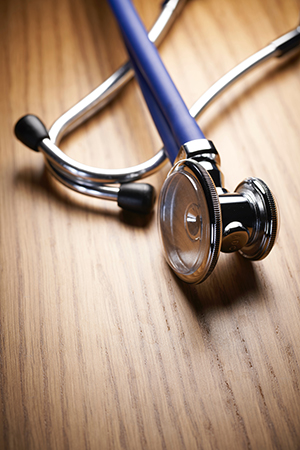
It’s interesting. In the human body, if you have pain or if you have dysfunction, most of the care is more towards the symptoms rather than the cause. You and I know this. You have to first look at the emotional aspect of that person. Emotionally, look at that part, and then you go structurally.
With tools and the direction that humanity is actually heading in and with the help of the internet now, we are connecting in this conversation using technology, so the information is spread out more. I’m hoping that this conversation is going to just light up lights on people’s minds and start looking after the scar thinking that if they have a problem before they do surgery, look for other alternatives because if you wait for somebody to take care of you, that’s never going to happen.
You are the one in charge. You are the best doctor for yourself. If you get in a car accident, yes, you need to go to a hospital. If you’re bleeding, that’s it. But anything else, it’s pretty much under your control.
Beautifully said. I want to ask you, how does it help people who have diabetes? Also, I know it affects anti-aging as well.
With diabetic patients, it actually helps indirectly to balance glucose levels in the body. The way it does this is the same example. When you treated your back, it made those muscles stronger and it stimulated them to grow.
I took my relative that got diabetes. We did the back and she feels so much better.
Yes, because it’s stimulating muscle growth. It’s almost like now, she’s doing more workouts without doing any workout. It just helps to burn more sugar. It increases the metabolic rate.
When you treat a diabetic person, what do you use on him? Do you do the back, the hands, the belly? What do you do?
I go more after big muscles because that’s where we can make more difference. Glute muscles, quadriceps muscles—quadriceps muscles are really powerful because there are a lot of stem cells that live along the big blood vessels there.
I’m going to share this story with you quickly. I had a client who beat cancer six years ago. She’s in her 70s. She came to me complaining about her knees, so I treated her knees. Six weeks later, she came back for a follow-up. I wanted to ask her, how are your knees? The first thing she said to me is, ‘My nails are getting stronger.” I said, “What?” She said, “My nails are getting stronger. Is that okay?” “Yeah, that’s actually the stem cell activation, that we have woken up those dormant stem cells. “
Six weeks after that, she started dreaming for the first time after six years. In chemo, she lost that ability. Then, about three months later, she was dreaming in color again. All I was treating her was for her knees, on the quadriceps muscles.
I’m going a step ahead. I guess it can open your third eye too.
I had some clients that I’ve treated for that too.
With diabetic patients, you just go and take big muscle groups. Will you do the chest? Will you do the back?
We don’t recommend working around the lung area with high-intensity shockwave systems because it can block the lung, because the lung is a gas organ. That’s one area that all practitioners know, but you’re totally safe if you use the lower latissimus dorsi muscles, the biggest muscle of the body. Very important actually are the glute muscles and the quadriceps muscles because we sit a lot. We neurologically make these muscles weaker when we sit at the office and when we drive. These muscles need to wake up. These are the muscles that support you when you’re actually walking and doing activities.
Uran, I wish we had more time to talk about all this amazing stuff. I might have to have you back again if you are willing.
Any time. No problem.
Before we say goodbye for now, what are your three top tips to living a stellar life? Where can people find you because so many people need you?

My first tip for everybody is just focus on breathing. Breathing is the number one thing. You pick a method and focus on that because without oxygen, there is no life. The second thing is the mindset. Try to check yourself. Every time you find that you’re going down a rabbit hole with your thoughts inside your brain, just say, hey, is this real or am I creating this in my head? If you’re just creating in your head, then try to focus to stop that. Then, just be active and make sure of what you put in your body because when those three are in place, then you keep moving.
I learned this in school. A door handle that keeps moving never gets rusted, so movement is life. But for the movement to happen, you have to have the breathing, you have to have the mindset in place, and you have to have the right nutrition. Every time you have pain, pay attention to your surroundings and see what is missing in your environment, what is the trigger, what your body wants, and what your nervous system wants this change for.
Then, be responsible for your health because if you wait for somebody to take care of you, you’re going to be looked at just as a number. Start with yourself first. You have lots of good people on this planet who are willing to help you and guide you in the right direction.
Myself here, I have two clinics in Edmonton. They’re called Unpain Clinic. Our mission is to help one million people reduce pain by 70% by December 31st, 2022. We are doing that by treating actively at our clinics or by me training others around the world to help other people. That’s our goal.
If you need any help, please go to our website at unpainclinic.com. You can schedule a free telehealth session directly with me. I’m willing to help you and guide you wherever you are. Just contact us and then my team will help you and guide you to find the right clinic or shockwave treatment wherever you are.
Uran, this was mind-blowing and amazing. I appreciate you. You’re a wonderful human being and such a smart and kind healer. Thank you so much.
Thank you, Orion. Thank you for having me. I hope our conversation helps somebody to unpain whatever level in life.
I’m sure. Thank you and thank you, listeners. Remember to focus on what you want because breathing, mindset, and nutrition are so essential. Always find what will work the best for you, take care of you first, and have a stellar life. This is Orion. Until next time.
